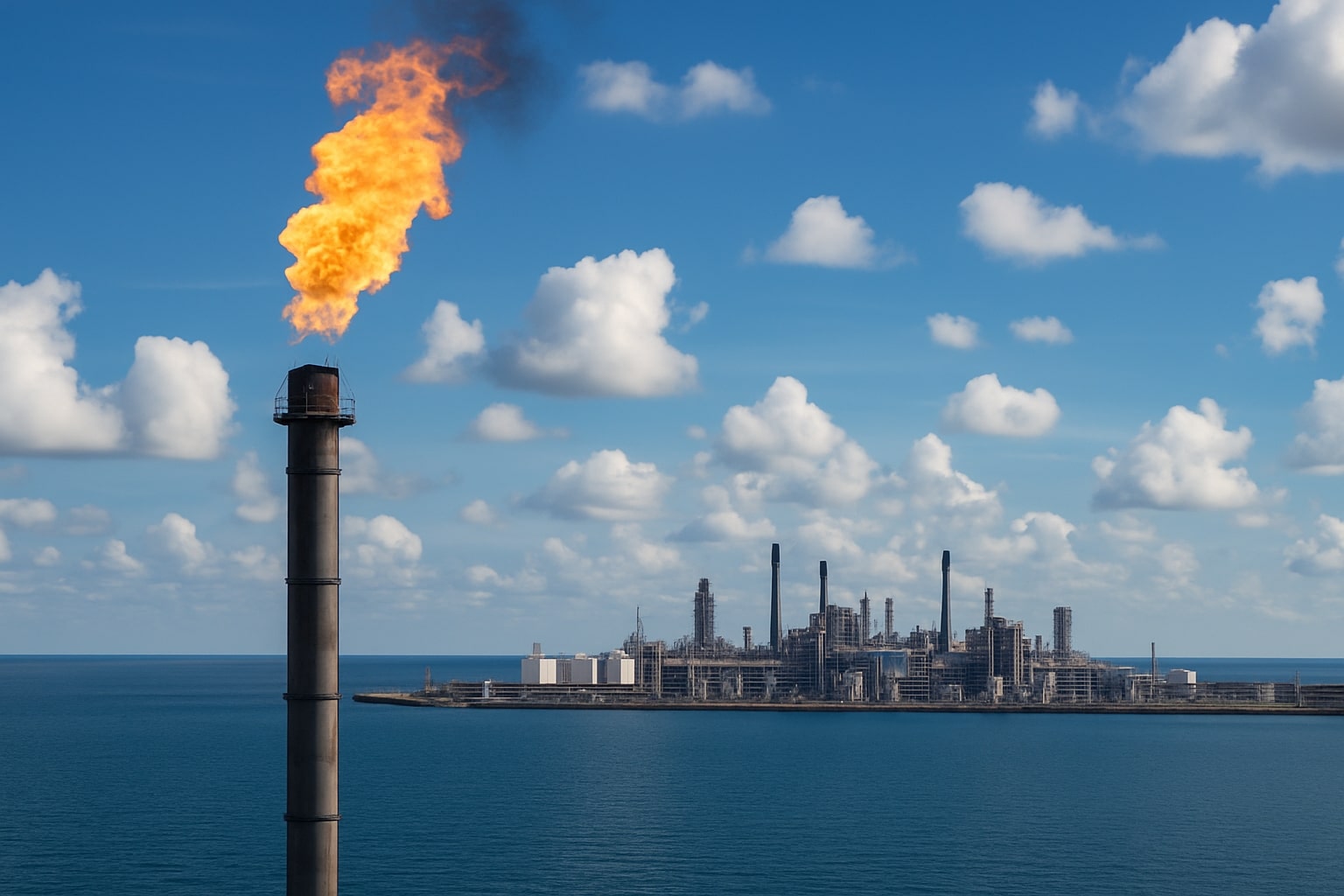
Natural Gas Price Forecast – NG=F Futures Test $3.00 with Storage Data and LNG Exports in Focus
U.S. supply at record 107 bcf/day, EU storage at 77%, and resistance at $3.06–$3.30 keep NG=F in a critical consolidation zone | That's TradingNEWS
Natural Gas Price Forecast – NG=F Stabilizes Near $3.00 as Storage, Weather, and LNG Flows Shape Outlook
The natural gas market has entered September trading with elevated volatility, consolidating close to the $3.00 level on NG=F futures after recovering from a late-August dip to $2.70. Despite repeated tests of resistance at $3.06, bulls have managed to defend the $2.92–$2.95 support band, underpinned by tighter short-term supply data and ongoing LNG export strength. However, the broader setup remains conflicted as record U.S. production, cooler weather forecasts, and ample European storage challenge the durability of the rally.
US Supply Dynamics and EIA Data Drive Price Action
The most recent EIA report showed that U.S. natural gas inventories for the week ending August 22 rose by 18 bcf, well below the five-year average of 38 bcf and consensus expectations of 27 bcf. That pushed stockpiles to 3.5% below last year’s levels but still 5% above the five-year seasonal norm, reflecting adequate supply despite the smaller build. U.S. dry gas production remains near record highs, averaging 107 bcf/day in the lower 48 states, up nearly 5% year-over-year. Rig activity has softened slightly, with Baker Hughes reporting 122 active rigs, down from a two-year high of 124 earlier in August, but still significantly above the four-year low of 94 seen in September 2024. LNG exports continue to absorb part of this output, with U.S. terminals running at 15.2 bcf/day, matching record flows after maintenance shutdowns ended.
European Gas Prices and Storage Cushion Global Balances
Across Europe, natural gas benchmarks have slid toward €31.6 per MWh, testing a 15-month low. Inventories across the EU are now 77% full, on pace to exceed the bloc’s 80% target by November. LNG imports into Europe are up more than 50% year-to-date, with the U.S. supplying record cargoes in August. This abundance has blunted the impact of supply risks from Russia, even as sanctions and refining disruptions continue to threaten longer-term security. Traders are now focused on whether proposed EU regulations could formalize a complete ban on Russian pipeline gas by 2027, a policy shift that would reshape Europe’s reliance on U.S. LNG and other suppliers.
Technical Landscape: NG=F Faces Critical Resistance
Natural gas futures are currently consolidating below resistance at $3.06–$3.13, with higher targets at $3.21 and $3.30 if bullish momentum strengthens. Immediate support sits at $2.92, followed by $2.85 and the August floor at $2.70. Indicators show balanced but cautious sentiment: the RSI at 54 signals neutral momentum, while the MACD remains marginally bullish. The 50-day EMA is positioned around $2.95, and the 200-day EMA near $2.94, both acting as strong short-term anchors. A break above $3.06 could trigger stop-driven rallies, while failure to defend $2.92 risks opening downside gaps toward $2.62, the bearish target highlighted in recent forecasts.
Weather Outlook and Seasonal Patterns Shape Short-Term Risk
Cooler forecasts for the northern half of the United States between September 7–16 are expected to suppress power burn demand, with forecasters projecting below-average temperatures in key consuming regions. This reduces the call on natural gas for air conditioning loads just as summer draws to a close. At the same time, traders recognize that September historically delivers choppy trade before the onset of the winter heating season. Early positioning ahead of winter is likely to create whipsaws, particularly if hurricane season impacts Gulf Coast LNG infrastructure or pipeline flows.
Read More
-
UCO ETF Price Forecast: Can NYSEARCA:UCO at $18.57 Ride a 2026 Oil Squeeze?
18.12.2025 · TradingNEWS ArchiveStocks
-
XRPI at $10.50 and XRPR at $14.93 Hit XRP ETF Lows While XRP-USD Holds $1.84 After 30 Days of Inflows
18.12.2025 · TradingNEWS ArchiveCrypto
-
Natural Gas Price Forecast: Henry Hub Holds Around $4 as EIA Draw Hits 167 Bcf
18.12.2025 · TradingNEWS ArchiveCommodities
-
USD/JPY Price Forecast: Pair Holds Above 155 As BoJ And US CPI Set Up A Major Break
18.12.2025 · TradingNEWS ArchiveForex
OPEC+ Meeting Adds Indirect Influence on NG=F
While natural gas fundamentals are largely regional, cross-commodity sentiment matters. WTI crude has steadied near $65.36 per barrel and Brent near $68.84, both consolidating ahead of the September 7 OPEC+ meeting. Analysts expect no major output changes, but geopolitical risks—particularly attacks that have disrupted 17% of Russia’s refining capacity—continue to weigh on energy complex volatility. A firmer oil market can indirectly support natural gas by anchoring broader energy sentiment and spurring substitution in power generation markets.
Regional Pricing and Basis Moves Provide More Nuance
Daily spot data highlights regional spreads that continue to reflect infrastructure bottlenecks and local demand. Henry Hub eased by $0.15, while Algonquin Citygate surged over $1.15 amid Northeast constraints. SoCal Citygate posted $0.225, reflecting California’s persistent supply tightness, and Northwest Sumas fell sharply by $0.14, underscoring weaker Canadian inflows. These dislocations matter as they illustrate how local market pressures can diverge from benchmark NG=F futures and complicate hedging strategies.
Investor Positioning and Market Sentiment
Funds have shown a tug-of-war in positioning. Recent profit-taking and a bearish weather tilt capped gains even as storage data supported higher prices. With futures settling just above $3.00, sentiment is evenly split between bears citing record production and bulls pointing to limited storage builds. The Fear & Greed index for energy is hovering near neutral, reflecting hesitation among speculators ahead of seasonal demand spikes. For short-term traders, options activity indicates growing interest in the $3.00–$3.30 call range, with implied volatility elevated.



















